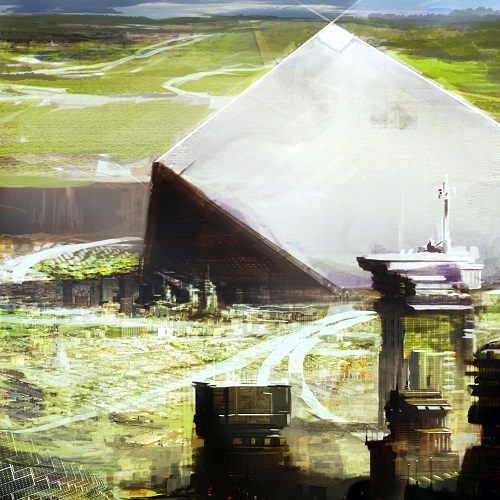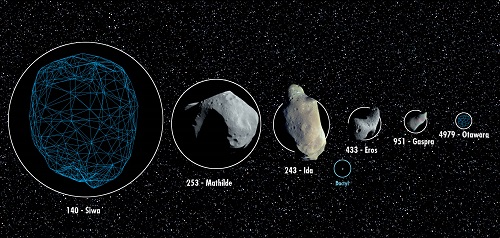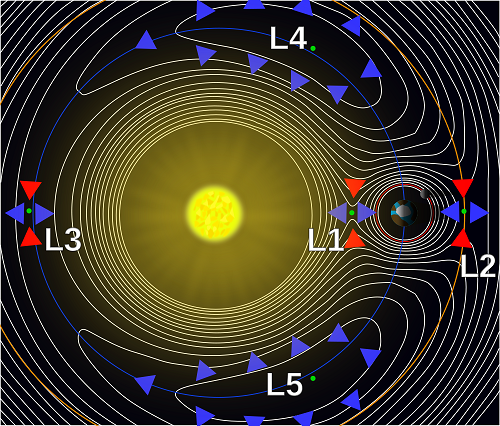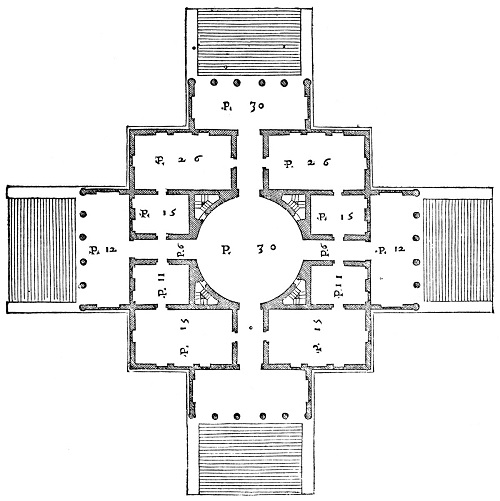Today Heath Rezabek continues his investigation of the Vessel proposal, a strategy for preserving the cultural and biological heritage of our species. Based in Austin TX, librarian and futurist Rezabek is concerned with existential risk and ways to manage it. His work has yielded lively discussions in the comments section here, as has that of his collaborator Nick Nielsen, from whom we’ll hear tomorrow. In this essay, Heath moves on to question not only the various forms a Vessel might take, but where and how it could be built. Your thoughts are solicited not only in comments but also through the online survey whose address is given at the end. Previous essays in this series are Deep Time: The Nature of Existential Risk (on the mitigation of Xrisk through long-term archival and learning labs) and Visualizing Vessel (on visualization, design fiction, science fiction prototyping and their application to the Vessel proposal).
by Heath Rezabek

Comments and discussion in the previous installment of this series exploring the concept of Vessel habitats have yielded some unexpected and exciting developments. We have begun to flesh out an expanded conception of the Vessel proposal, in which the role of habitat and community is moved further to the fore, drawing on the ideal of a Vessel settlement as a haven — a word which means both refuge and port. If the Vessel is the core of material preserved, and a Haven is the community or habitat at which it rests, what does that haven look like? If actual ships some day departed from a Vessel Haven, as an exemplar colony of humankind dedicated to the cultivation of humanity (or even transhumanity’s) enduring heritage… What would that Haven be like?
The enthusiasm expressed regarding the possibility of building an interactive simulation or exploration game around the idea of exploring a Vessel installation has led the development team to begin exploring that very possibility, with Unity 3D as our current environment of interest.
In response to the insistent but welcomed critique that Vessel’s early visualizations were too abstract, remote, and alien, we have begun a deep exploration of visual patterns that more fully reflect humanity, and that tap into a more expressive and humane architectural language.

At this stage we are gathering examples that inspire us; some are from games, some from science-fiction or speculative art, some from works of real-world architecture. To peek in on this visual sounding board at any time, (or to submit images that you feel project and reflect a reaching-forth of our nature), feel free to check out http://vesselhaven.tumblr.com).
More on these developments in future installments.
Resilient Future Habitats and Long Term Archives: Towards a Vessel Pattern Language
One of the pivotal points in the development of the Vessel proposal was a re-reading of the section on The Future of Mankind in Peter Ulmschneider’s Intelligent Life in the Universe (p.169-204). My edition is older, and I had read this section before, but often key facets of a solution are not clearly visible before a supporting framework has been perceived.
In this section, Ulmschneider muses on our prospects over the near and long term, but it was his thoughts on the role of asteroids which most directly informed the Vessel proposal. He writes:
“While the moon and perhaps Mars are expected to play important roles in the human settlement of space, it is the much smaller asteroids with their huge mineral resources that will have by far the largest potential significance for the future of mankind. (p.175) … As the human mind opens up to the limitless possibilities and opportunities of living in space, a great diversification of human society can be envisioned. Unlike Earth, where limited resources together with economical and geographical factors do not permit the maintenance of in permeable boundaries between nations, space colonies could develop into fully self-sufficient statehoods, which might individually regulate their physical contact and communication with Earth and other space colonies, and thus develop their own independent cultures and ways of life. As a huge number of asteroids, moons, Kuiper belt objects, and comets awake exploitation, territorial behavior among these nations would be impractical, unnecessary, and unreasonable. Ultimately, this might lead to an unimaginable diversity of cultures and lifestyles of mankind. This cultural diversity, and the spread of mankind over the entire solar system, would be the best insurance against any fatal catastrophe in the future of rising from external and internal threats.” (p.187) [1]

If an asteroid could be surrounded by a shell-like structure — perhaps a geodesic membrane, using the irregular mass of the asteroid to supply material for construction and infill to shape the mass towards roundness — then one could conceive of small worlds as a technical possibility.
The train of thought which led from asteroid-worlds to the Vessel proposal ran like this: Naturally, this kind of asteroforming (?) effort would take time, and time is not guaranteed. We have not yet solved the puzzles of closed-loop ecosystems. The moon is far closer, and its conditions closer to those on an asteroid than Earth’s are. Yet consider the Earth: even our most extreme locations would provide wonderfully forgiving environments for experiments in large-scale enclosure, with the added benefit of carving out limited spaces where we could strive more effectively to meet key challenges on Earth. And from there, the step to proposing archival and learning facilities such as Vessel habitats is a simple realization of priorities: Preserve what we have been and done so far, as an irreplaceable resource for the future and an inspiration for the present.
This train of thought yields multiple solutions to anticipated problems, and none of these solutions need be lost if they can be articulated. Let’s name some of these:
- Asteroid Enclosures (Though he did not focus on asteroids, thinking them too irregular in shape, at Starship Congress 2013 Ken Roy referred to this strategy as Shell Worlds.)
- Lunar Enclosures
- Earthbound Enclosures

A theme arising through these approaches to Vessel habitat design is that of installation placement or positioning. Once we have determined to encourage the creation of many different instances as a strategy for resilience (each with its own unique qualities), it is a clear step to consider which sites would be ideal, or which sites would take priority if time were limited and placement were triaged. We have already mentioned the asteroid belt, and the moon, and our extreme environments — perhaps Antarctica, or a seaborne instance at the arctic circle. Some of these sites could be located by informed and determined seekers; others perhaps would be carefully hidden.
In correspondence, Lt. Col. Peter Garrettson recommended several potential positions, including the Lunar South Pole and the L5 Lagrange point. He also noted that having a Vessel facility housed within a solar power transmitting satellite in geosynchronous orbit, or positioned between two or more of them in an orbital array, could be a useful arrangement. This raises the possibility of any Vessel sited within a populated region to have at least one mirror directly above it, in GEO, providing it with supplemental power. Naturally, since the positions of these GEO Vessels would be clear, concealed mirror sites would also be needed.

If we were to name some of these solutions, we might yield:
- Distributed Sites
- Redundant Positioning
…with subtypes including:
- L5 Point
- GEO Positioning
- Lunar Dark Side
- Lunar South Pole
… and so on.
Many more of these key positions could be envisioned. (In fact, as an exercise, we will try to do just that. See the end of this article for way to provide thoughts on where mission-critical caches of Earth-originating life’s traces might be placed.)
Another class of potential problem is that of power security. Designing a Vessel Haven or complex to operate independently of any surrounding infrastructure could help to mitigate risks to a Vessel Haven from large-scale solar events or other unforeseen circumstances. Dr. Daniel Sheehan, of USD, notes in correspondence the many ways that hardening a Vessel installation’s power system could be accomplished:
“If one has access to a space weather forecast, then vulnerable elements can be disconnected before a storm.” … “If the power grid is small, then the Faraday induction due to time changing magnetic fields can be minimized. If transformers and other devices have surge protection, this would add safety. If one got away from grid systems entirely and went with local power generation, e.g. small electric generators or, better yet, heat recyclers, then there should be no problem. Solar events are really only problematic for large-scale electrical grids. The bottom line: your Vessel installation could be easily hardened against flare events.”
We can name some of these strategies thusly:
- Independent Power Infrastructure
- Dedicated Power
- GEO Beamed Solar
- Forecasting Downtime
- Heat Cycling
Once a design solution is named and detailed such that it can be reapplied in novel ways, it can be called a Design Pattern. If all of these design patterns are developed to reinforce one-another, together they form what is called a Pattern Language.
These two concepts come to us from the fields of architecture, computer science, and design. Originating with an architectural pattern language expressed by Christopher Alexander in 1977 (see his book A Pattern Language), this approach requires that a design solution include a few key elements:
– A concise name or title which expresses clearly the design solution it strives to implement.
– The original problem statement or design challenge, articulated concisely beneath that title.
– Context, research and insights into the design challenge and the ways they suggest their solution.
– The full design pattern, articulated concisely.
– (Ideally) the design pattern is flanked by a listing of those larger patterns which help to shape it (at top), and those smaller patterns which it helps to shape (at bottom).

Developing a Unified Design Pattern Language for the Vessel project is one of our key goals for 2014. This pattern language will ideally span a range of disciplines, from architecture to systems design. Because the approach has been successfully applied across fields for decades, developing a cross-disciplinary pattern language for Vessel design should prove quite possible. If the virtual simulation of various Vessel Haven architectures proceeds well, these virtual spaces may become embodiments of the pattern language being built, like a living database that can be experienced also as an interactive space.
And, of course, all of these lessons should be applicable to other complex design tasks along the road towards an interstellar civilization.
Determining the core patterns which would help form a Vessel Haven is an ongoing process. As a first small test of crowd input, we present an opportunity to help explore one of these design factors: That of location.
An archive of Earth’s culture, science, and biodiversity could take many forms, but one question is that of where to position such facilities, and there are many possibilities. At the following link, you can help shape those design possibilities by submitting locales or positions which come to mind, while also prioritizing the existing ones as more or less preferable. Imagine that resources and motivation were no issue, and that the means existed right now to build a vast network of Vessel archives and havens. Where would they go and which would come first?
Examples of possible Vessel locales include Arctic Circle, L5, or Lunar South Pole. When listing locations in cities and populated areas, the assumption will always be that these are mirror facilities, not the sole versions of those facilities, for the sake of resilience. So, examples of populous locales might include New York (Mirror), London (Mirror), and Geneva (Mirror).
There are many more possibilities to be explored. Please give it a try! You may add as many ideas as you like, you may vote as many times as you wish, and the survey never ends: simply stop when you’re done, and feel free to [View Results] at any time:
http://www.allourideas.org/vessel-positioning-2013
As always, questions and comments are welcomed.
References
[1] Peter Ulmschneider, P. Intelligent Life in the Universe (Springer-Verlag, 2004).
[2] Alexander, C., Ishikawa, S. & Silverstein, M. “A Pattern Language: Towns, Buildings, Construction,” (CES Center for Environmental Structure) (Oxford University Press, 1977).


Book marked it!
You’ve no doubt read about the extensive literature proposing a lunar colony….solar energy from a mirrored crater….another nearby crater domed with transparent material, the film supported by atmospheric pressure….people could ‘fly’ inside this interior of little gravity wearing ‘wings’ of suitable design….both craters are located near a large deposit of ice…. there are plans on the Internet for the steam catapult able to achieve escape velocity to deliver minerals, people, and water to an orbiting Iscarus Firefly starship under construction….spacious interior living quarters are built into the crater rims….and its only six days return to earth….a strange coincidence, don’t you think….keep going….master plans must precede future appropriations….
James – Yes, the moon has been on radar for so long; recently I re watched that old friend 2001, and was studying the design details: a crater-shaped (and sized) layout was key to the design.
The moon combines practical proximity with some important design challenges, at a real remove from risk factors associated with the Earth’s surface. Imagine being able to look up with a scope and see clearly the outlines of a haven…
New Tranquility, anyone?
A telescope in a crater on the Lunar South Pole will be in permanent shadow and pointed at the center of the galaxy. Such a telescope will provide a perfect justification for a long-term human presence on the moon, as it will be continuously updating data on what extra-solar planets are good targets for our probes and voyages. And along with a telescope, of course a hotel. At first highly subsidized, the lunar South Pole facility could eventually be fully funded by tourism.
It seems you are making headway on this idea. Some general comments.
1. This is going to be a very costly undertaking. Funding will be hard enough without going off-planet.
2. If X-risk is going to be fairly devastating, vessels off earth are only going to be really useful for us if we have off-planet colonies. Most useful will be ones reachable on Earth.
3. An exposed structure on the moon will be prone to damage (meteors, radiation, etc). Why not completely bury it for protection and only expose a marker, like a tower, a geometric surface like a triangular crater, or the Clarke solution, a strong magnetic field or other detectable emission.
4. Power on the moon is going to be problematic. Solar arrays/reflectors will slowly get covered in electrostatic dust. A synchronous SPS beaming down to a rectenna might also be difficult as I understand lunar orbits are not very stable due to Earth and solar gravity effects. Perhaps some sort of large, long-lived RTG is needed? Alternatively, use the temperature differential between lit and shadowed areas. A polar location would make sense in this case, or a higher latitude deep crater.
5. Possibly use geothermal power for an Earth based vessel. This will suggest alternative locations.
6. The mirror sites on Earth should be used to generate funding. I have suggested partnering with Disney, perhaps having a vessel at the Epcot center in the Florida Disney World location, as this is a huge tourist destination.
Thanks for the comments, Alex. All of these thoughts are helpful. As you point out, carrying such a project through in reality will / would be an extremely costly endeavor. (Less so perhaps than the eventual building of a starship, but still quite a feat.) The bad news is that I myself, of course, don’t have the means to take things much further in a material sense, though I’m ever open to collaborations. :) The good news, though, is that it is possible to simulate things in virtual reality which are beyond reach in the material world, and that those digital architectures can be helpful down the line should others eventually carry these ideas further with or without me.
So, the focus is turning towards a virtual construction project, and I’ll update here while hopefully turning to some tangential topics in the process.
One of the enduring themes that’s emerging is striking a balance between exposure and refuge (above/below); short-term mitigation and long-term messaging (Earth/moon+); and approachable and abstract markers (organic/geometric).
With this in mind, your later notes are particularly intriguing; positioning at transition points between light and shadow or at thermodynamic boundaries for purposes of power generation is a strategy very much in keeping with the pattern language that’s developing here.
I also think your idea of Vessel as destination / attraction (Vessel Attractor?) is incisive. It’s actually fairly pragmatic to consider positioning them as stand-alone attractions nearby to populated areas without being immersed in them.
Thanks for the feedback; it’s very helpful during such a tenuous stage as this.
Hello Heath,
Have you come across a Manga called ‘Hotel 2079’ ?
It covers some of the ideas you propose here, with an interesting visual presentation. http://mangafox.me/manga/hotel/v01/c001/1.html
The idea of an hyperbolic tower is a good one, I think. It should be more resistant than a cube, and the size should make it impervious to ice ages as well. Its core could be a mountain; that should save on materials ; and I think that the best sheathing material would be alumina blocks. It’s a tough oxide, and can be made by simpler and less energy wasting methods than metals. The hyperbolic shape lends itself to interior corridors, rather like the pyramids, and the tall appex is very visible. And artificial.
The best emplacement would be a nice old mountain range, with some large deposits of clay nearby. The Torngat mountains in the Canadian shield might be interesting: it a very stable area geologically, and mont d’Iberville, for Example, goes up to 1600m. But I’m not certain there are clays so far to the north.
Shaping a mountain has the davantage of being relatively cheap: a lot of explosives can do wonders. The Mont Wright in northern Quebec is a prime example; it is now a hole in the ground and no longer a mountain at all.
Michel Lamontagne
A fairly cheap proposition would be a Wally type robot on the moon (more likely a group of Wallies) . Solar powered, it could use a shovel to build geometric shapes over a few decades or more. At 20m per day, 7 km per year, 700 km in a century, it could encode quite a bit of information in a shape visible from the Earth. Rather like the Nazca lines: not too much work, lots of visibility.
The French Comic strip ‘Z comme Zorglub’ , writen in 1960, proposed a version of the Moon as a visible support for information, albeit for publicity. The only problem is the mad scientist forget to tell his mind controlled slaves what language to write the message in; so it is written in Zorglangue, an invented language, much to the chagrin of the mad scientist. ;-)
http://www.spirouworld.com/zorglub02.htm
The final avenues that come to mind. First, the very small; encode the information in the genetic code of animals that are likely to survive a long time (rats and cockroaches come to mind). Second, the cultural, create a society dedicated to maintaining a monument for the ages, rather like the Ise Grans shrine, the Japanese that destroy and rebuild the same temple every few years. Or like the second foundation is the Asimov novels…